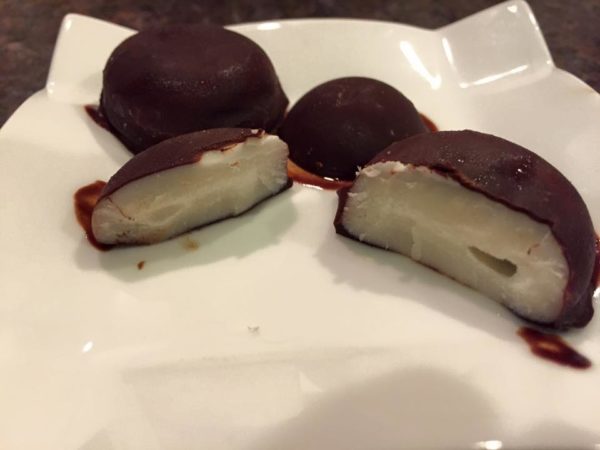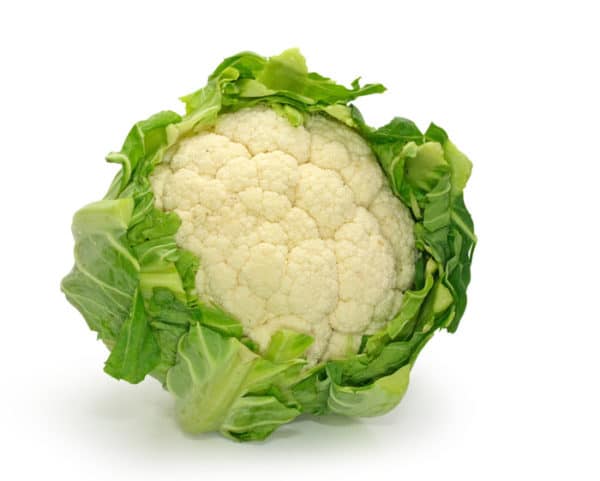
Thanks to The Plant Paradox1, many people now falsely believe that lectins are the root of all health problems. But like any health topic, the truth is more nuanced than that. If you are wondering whether to give up lectins, here is my balanced view based on what I’ve read in the scientific literature.
Lectins are a family of carbohydrate-binding protein. The root for the term lectin is the same as that of the word “select,” because living organisms rely on the specific sequence of sugars on lectins to recognize other cells or molecules. For example, immune cells detect infected cells by recognizing foreign lectins on the infected cell surfaces. As such, lectins make up a large family of proteins that are present in all living organisms, including plants, animals, and humans.
What are lectins?
Most lectins are harmless, but some types of plant lectins are more likely to cause harm than others, such as lectins found in seeds and those found in nightshades. Scientists believe that plants use lectins to protect themselves so that they’re less likely to get eaten2,3.
Lectins are a family of carbohydrate-binding protein. The root for the term lectin is the same as that of the word “select,” because living organisms rely on the specific sequence of sugars on lectins to recognize other cells or molecules. For example, immune cells detect infected cells by recognizing foreign lectins on the infected cell surfaces. As such, lectins make up a large family of proteins that are present in all living organisms, including plants, animals, and humans.
Most lectins are harmless, but some types of plant lectins are more likely to cause harm than others, such as lectins found in seeds and those found in nightshades. Scientists believe that plants use lectins to protect themselves so that they’re less likely to get eaten2,3.
Lectins – the good
Lectins and cancer
Some health-promoting lectins may decrease the incidence of certain diseases, although our digestive system cannot digest lectins well and tend to absorb them whole. Several plant lectins, when entering circulation intact, have anti-cancer properties4. Lectins from many common edible plants can be toxic to cancer cells, trigger cellular suicide (apoptosis), and inhibit tumor growth. Therefore, lectins and lectin-containing diet may reduce the risk of cancers or help with cancer treatments, based on cell-based and animal studies. However, we still need clinical studies to confirm that these are indeed effective cancer treatments.
Lectin-containing foods and longevity
The healthiest and longest-living populations in the world consume mostly plant-based diets, which are necessarily high lectins. For example, numerous studies found that high legume and whole-grain intakes are associated with a lower risk of all-cause mortalities5–8. Legumes may help with diabetes, high cholesterol, hypertension, and weight management9. They are also inexpensive and versatile foods.
However, keep in mind that these foods also contain other constituents than lectins. Legumes and grains are also great sources of resistant starches, fibers, antioxidants, and many other nutrients which have many health benefits.
Also, these studies are correlational in nature. In addition, people who tend to self-report eating whole grains and legumes are more likely to be more health-conscious and live healthier lifestyles than others, so we can’t conclude that whole grains and legumes caused them to live longer. But these studies are sufficient evidence that for people who tolerate lectins, lectin-containing foods are not harmful and can be included as part of a healthy diet.
Lectins – the bad
All plants contain lectins in seeds, fruits, roots, stems, saps, and leaves. If you are sensitive, certain plant lectins are more likely to cause inflammation, including10,11:
- Wheat lectins, such as gluten, gliadin, and wheat-germ agglutinin
- Legume lectins, which comprise 15% of proteins found in beans
- Grain lectins
- Nightshade lectins
- Insect-killing toxins found in genetically modified foods12
Therefore, elimination diets often recommended to people who have chronic inflammation or autoimmunity often recommend eliminating all seeds and re-introducing foods that contain the lectins above after other foods have been introduced.
Notably, there are two particularly toxic lectins, which can cause extreme food poisoning and even death, are red kidney bean lectins and castor bean lectins (also called ricin). Many other poisonous plant toxins are lectins, such as mistletoe lectins. When we discuss the harmful effects of eating lectins, remember that we are not talking about uncooked red kidney beans, castor beans, or mistletoe.
Why are some lectins harmful?
The problematic plant lectins are extremely hardy proteins, so they are poorly digested. Our protein-digesting enzymes digest lectins poorly, so up to 90% of intact lectins may be detected in the stool or even in the blood13,14.
In addition, lectins can bind to the exposed carbohydrates (glycoproteins) on the gut lining, which can affect the function of the cells. Lectins could damage the gut lining, reduce the number of villi, and inhibit digestive enzymes. As a result, it is possible that lectins get absorbed into the blood whole. In fact, most people have antibodies against lectins in their blood15. However, most people also do not suffer from any diseases from having these antibodies in their blood.
Because plant lectins can strongly stimulate the immune system, vaccine manufacturers use them as adjuvants to stimulate a better immune response to vaccines16,17. Nightshade lectins, such as from tomatoes, are especially immune-stimulating ones that we still eat.
Legume and grain lectins change the composition of the gut bacteria, which can result in gut inflammation and increased gut permeability18. The composition of glycoproteins on the surface of our gut cells can determine which type of bacteria dominate. Therefore, changes in the availability of these glycoproteins, either through binding to plant lectins or disruption of the cell structure, can select for certain bacteria over others. For example, consumption of legume and grain lectins can lead to an overgrowth of Escherichia coli and Lactobacillus lactis, which are associated with rheumatoid arthritis.
How to reduce lectins in foods
Traditional cultures have long learned to prepare their legumes and grains properly, so they can assimilate the nutrients and prevent digestive problems due to lectins. For example, grains could be milled white, then soaked, fermented, and cooked. In Latin America, nixtamalization is an alkaline processing step that removes mycotoxins and makes available the nutrients inside the hulls of corn19.
Other ways to reduce lectins in foods include:
- Sprouting reduces harmful lectins20
- Fermenting allows bacteria to break down some of the lectins21
- Soaking and cooking, especially pressure cooking, reduce most of the legume, seeds and fruit lectins22. However, cooking does not reduce grain lectins.
- Cooking beans with some seaweeds
Are lectins bad for everyone?
Humans have been eating lectin-containing plants for as long as we exist. Despite it being the plant’s weapon, our bodies have evolved ways to tolerate the lectins. The question we should ask is “Why is lectin bad now?”
I believe it’s the modern-day lifestyle factors – chronic stress, circadian rhythm disregulation, toxicity, excessive hygiene, lack of sun exposure, etc. These factors have together contributed to leaky gut and overall a heightened state of inflammation. It’s leaky gut and loss of tolerance to lectins that make lectins a problem nowadays. Once you heal your gut, it is possible to successfully re-introduce lectins again.
There are two types of people:
- People who are very sensitive to lectins, which are the minority. These could be due to:
- Genetics, such as variants in the CNR1, MTHFR, immune receptor genes, and other genetic predisposition to inflammation and leaky gut
- History of infections, which predispose them to autoimmunity
- Lack of sun exposure, as low vitamin D, predisposes you to autoimmunity
- Stress and traumatic experiences
- Toxic exposures that trigger the immune system, such as mold illness
Among these people, there is a spectrum of lectin sensitivity – some of them feel better avoiding grains, legumes, and dairy while consuming ample amounts of vegetables such as on a plant-powered Paleo-style diet. Others do better on the Autoimmune Paleo Protocol, which avoids seeds and nightshades but allows plenty of fruits, coconut, tubers, and vegetables. On the extreme, some very sensitive people, such as Mikhaila Peterson, cannot tolerate any plant-based foods at all. These people are the few and far between who develop lectin sensitivity from a rare combination of bad genes and environmental factors, such as childhood infections.
2) People who are not sensitive to lectins. These people tend to do well with consuming a lot of plants in their diets.
How to know if you are sensitive to lectins
You may be more likely to be sensitive to lectins if:
- You suffer from an autoimmune disease, allergic disease, or histamine intolerance
- You have digestive problems or leaky gut syndrome
- You experience mental health or cognitive problems
- You have elevated levels of adiponectin
- You have low dopamine and serotonin, resulting in low motivation, moodiness, and food cravings
- Eating high-lectin foods result in fatigue, brain fog, or other inflammatory symptoms soon after
- You are in a health crisis after a bout of very stressful life events
- You have many food sensitivities
- You experience significantly less inflammation once you minimize harmful dietary plant lectins
Could you be sensitive to lectins? The best way to find out is to experiment with a low-lectin elimination diet to see if it makes a difference in how you feel. You can find out more about a basic gut-healing diet and how to identify your food intolerances in my self-study Gut Healing Program.
Read also: The Plant Paradox Review- Are Lectins Dangerous? Part 1
References
- Gundry, S. R. The Plant Paradox: The hidden dangers in ‘healthy’ foods that cause disease and weight gain. (Harper Wave, an imprint of HarperCollins Publishers, 2017).
- Vandenborre, G., Smagghe, G. & Van Damme, E. J. M. Plant lectins as defense proteins against phytophagous insects. Phytochemistry vol. 72 1538–1550 (2011).
- Lannoo, N. & Van Damme, E. J. M. Lectin domains at the frontiers of plant defense. Frontiers in Plant Science vol. 5 (2014).
- De Mejía, E. G. & Prisecaru, V. I. Lectins as bioactive plant proteins: a potential in cancer treatment. Crit. Rev. Food Sci. Nutr. 45, 425–45 (2005).
- Li, H., Li, J., Shen, Y., Wang, J. & Zhou, D. Legume consumption and all-cause and cardiovascular disease mortality. BioMed Research International vol. 2017 (2017).
- Kouris-Blazos, A. & Belski, R. Health benefits of legumes and pulses with a focus on Australian sweet lupins. Asia Pac. J. Clin. Nutr. 25, 1–17 (2016).
- Ma, X. et al. Association between whole grain intake and all-cause mortality: A meta-analysis of cohort studies. Oncotarget 7, 61996–62005 (2016).
- Benisi-Kohansal, S., Saneei, P., Salehi-Marzijarani, M., Larijani, B. & Esmaillzadeh, A. Whole-Grain Intake and Mortality from All Causes, Cardiovascular Disease, and Cancer: A Systematic Review and Dose-Response Meta-Analysis of Prospective Cohort Studies. Adv. Nutr. An Int. Rev. J. 7, 1052–1065 (2016).
- Polak, R., Phillips, E. M. & Campbell, A. Legumes: Health benefits and culinary approaches to increase intake. Clin. Diabetes 33, 198–205 (2015).
- Coelho, L. C. B. B. et al. Lectins, Interconnecting Proteins with Biotechnological/Pharmacological and Therapeutic Applications. Evidence-based Complementary and Alternative Medicine vol. 2017 (2017).
- de Punder, K. & Pruimboom, L. The dietary intake of wheat and other cereal grains and their role in inflammation. Nutrients vol. 5 771–787 (2013).
- Ewen, S. W. B. & Pusztai, A. Effect of diets containing genetically modified potatoes expressing Galanthus nivalis lectin on rat small intestine. Lancet 354, 1353–1354 (1999).
- Vasconcelos, I. M. & Oliveira, J. T. A. Antinutritional properties of plant lectins. Toxicon 44, 385–403 (2004).
- Brady, P. G., Vannier, A. M. & Banwell, J. G. Identification of the dietary lectin, wheat germ agglutinin, in human intestinal contents. Gastroenterology 75, 236–9 (1978).
- Tchernychev, B. & Wilchek, M. Natural human antibodies to dietary lectins. FEBS Lett. 397, 139–42 (1996).
- Reyna-Margarita, H.-R. et al. Plant Phenolics and Lectins as Vaccine Adjuvants. Curr. Pharm. Biotechnol. (2019) doi:10.2174/1389201020666190716110705.
- Lavelle, E. C., Grant, G., Pusztai, A., Pfüller, U. & O’Hagan, D. T. The identification of plant lectins with mucosal adjuvant activity. Immunology 102, 77–86 (2001).
- Cordain, L., Toohey, L., Smith, M. J. & Hickey, M. S. Modulation of immune function by dietary lectins in rheumatoid arthritis. Br. J. Nutr. 83, 207–17 (2000).
- Urizar Hernández, A. L. & Bressani, R. The effect of lime cooking of corn on phytic acid, calcium, total and ionizable iron content. Arch. Latinoam. Nutr. 47, 217–23 (1997).
- Savelkoul, F. H., Tamminga, S., Leenaars, P. P., Schering, J. & Ter Maat, D. W. The degradation of lectins, phaseolin and trypsin inhibitors during germination of white kidney beans, Phaseolus vulgaris L. Plant Foods Hum. Nutr. 45, 213–22 (1994).
- Panda, R. & Garber, E. A. E. Detection and quantitation of gluten in fermented-hydrolyzed foods by antibody-based methods: Challenges, progress, and a potential path forward. Frontiers in Nutrition vol. 6 (2019).
- Carbonaro, M., Grant, G., Cappelloni, M. & Pusztai, A. Perspectives into factors limiting in vivo digestion of legume proteins: antinutritional compounds or storage proteins? J. Agric. Food Chem.48, 742–9 (2000).
Share this:

Are you feeling stuck?
Do you feel as if something is missing from your practice that's keeping you from delivering breakthrough outcomes for your clients?.
Recent Posts
Our Programs
Nutritional Endocrinology Practitioner Training (NEPT)
The Mastery and Certification tier is our flagship program and provides everything you need to feel confident as a practitioner who knows how to get results that lead to healthy and happy clients.
Functional Assessment Mastery
Explore the relationships between the most important hormones and their relationship with nutrition.
Functional Nutrition Mastery
Learn how to support your clients to eat and supplement in a way that reduces and eliminates chronic symptoms.
Medical Disclaimer: The information on this website is not intended to replace a one-on-one relationship with a qualified health care professional and is not intended as medical advice. It is intended as a sharing of knowledge and information from the research and experience of Dr. Ritamarie Loscalzo, drritamarie.com, and the experts who have contributed. We encourage you to make your own health care decisions based upon your research and in partnership with a qualified health care professional.
Disclosure: Sometimes (but not always), when I share resources in my programs, newsletter, and on my website, I'm using an affiliate link, which means I do make money if you buy. My credibility is extremely important to me; therefore, I only endorse the products, services, and people I believe in. DrRitamarie.com is independently owned and the opinions expressed here are my own.
Click here to see our Privacy Policy.










